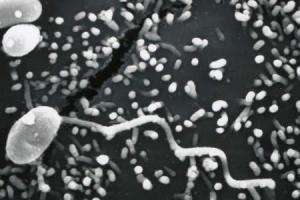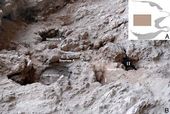While engineers at the Large Hadron Collider (LHC) race to fix its teething problems and start looking for new particles, its ageing predecessor is refusing go silently into the night.
Last week, physicists announced that the Tevatron particle accelerator at Fermilab in Batavia, Illinois, has produced particles that they are unable to explain. Could it be a sign of new physics?
The Collider Detector at Fermilab (CDF) monitors the particles that spew from collisions between protons and anti-protons, which are accelerated and smashed head-on by the Tevatron. The collision occurs inside the 1.5-centimetre-wide "beam pipe" that confines the protons and anti-protons, and the particles created are tracked by surrounding layers of electronics.

© FermilabThe Collider Detector at Fermilab has found hints of new physics.
In this instance, the CDF was looking at bottom quarks and bottom anti-quarks that decay into, among other things, at least two charged particles called muons.


